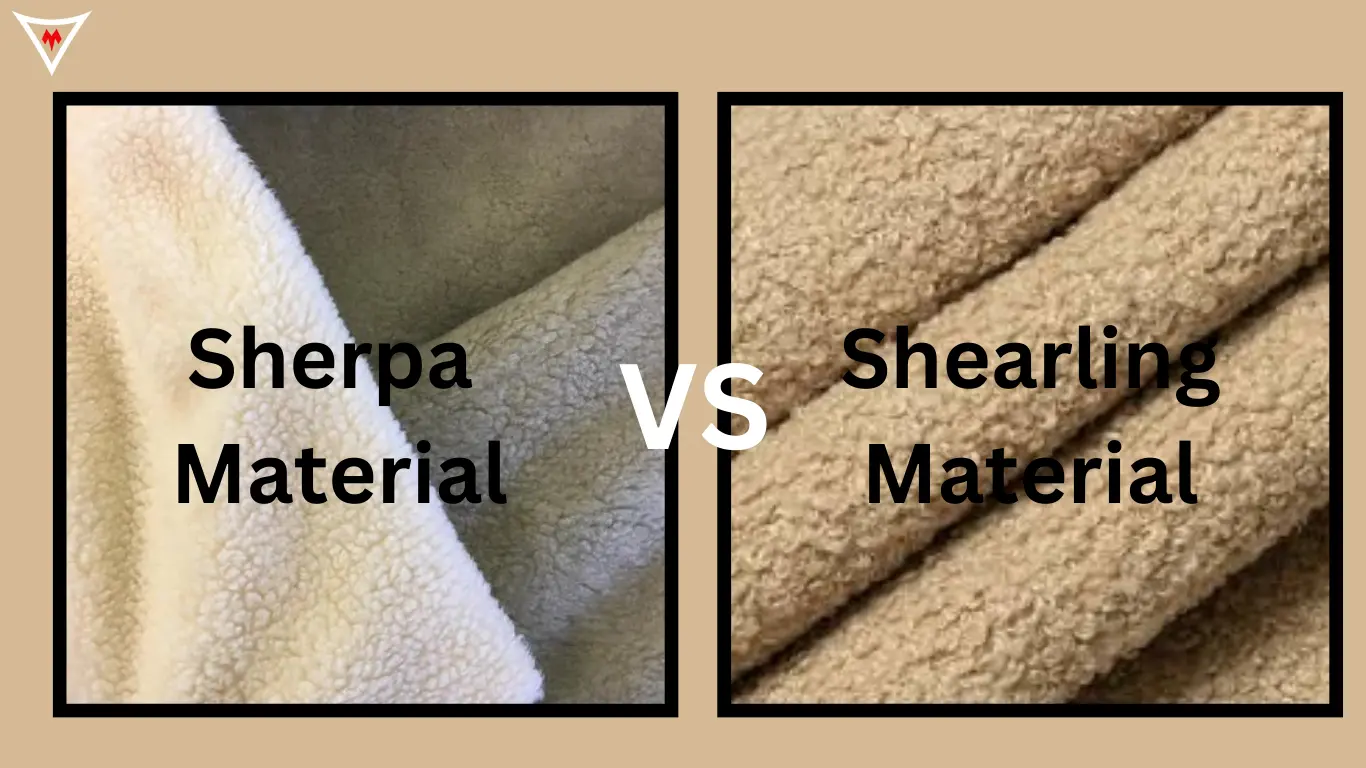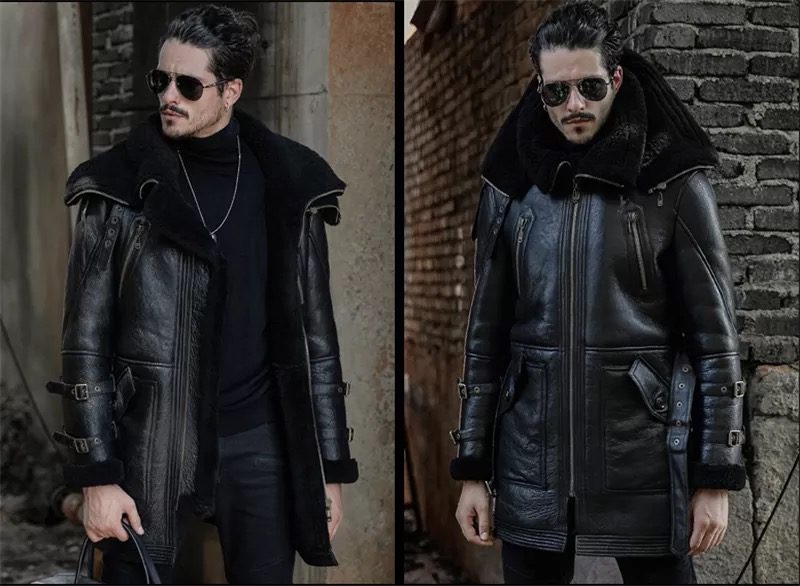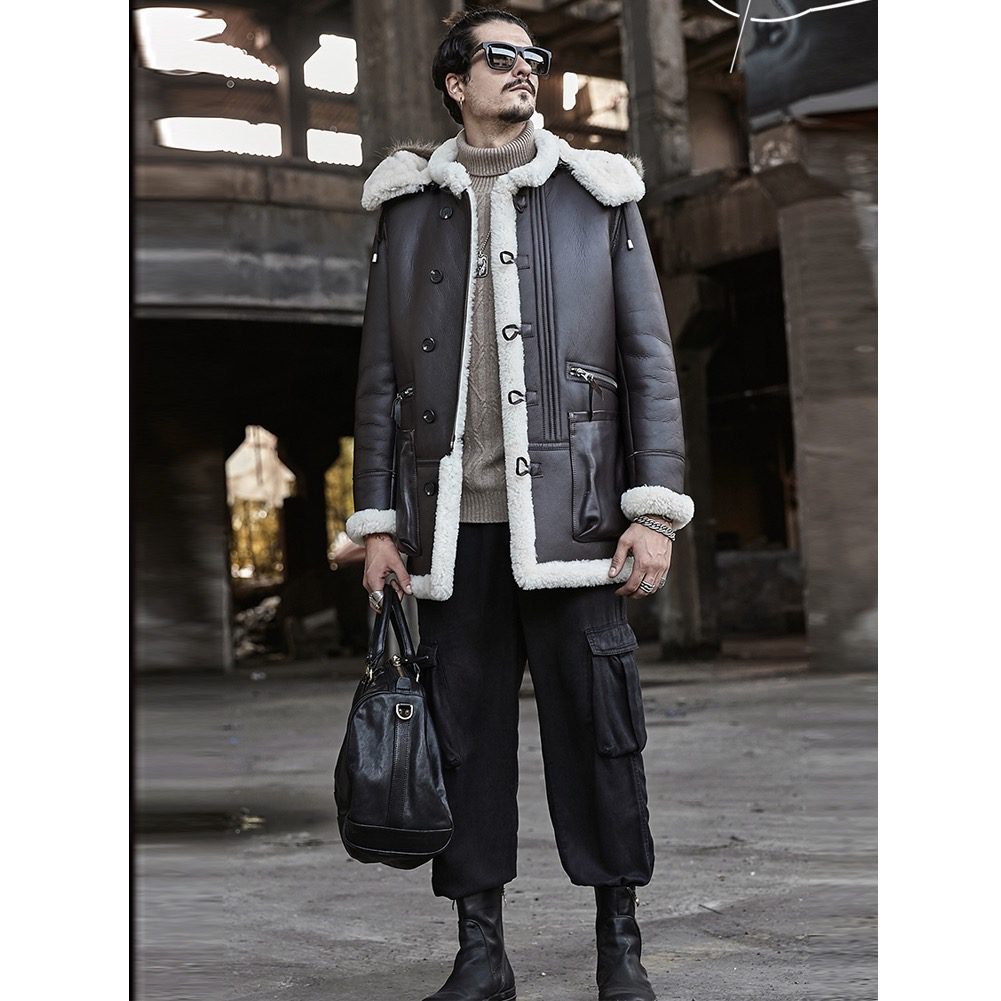No products in the cart.
Sherpa vs Shearling: 27 Hidden Differences To know
Sherpa vs Shearling, which is a better material? or why should you choose Shearling over Sherpa? If you are looking to know the major differences between the two of them, then this blog post is sure for you.
As we delve into 2024, numerous types of materials were introduced for the making of jackets. Some common materials or hides are Kangaroo, Cowhide, Cordura, Vegan, Textile, Faux leather, shearling or sheepskin, and Sherpa. But “what is the best material to make a jacket”, depends on the wearing conditions of one who wears it.
All these materials are good enough and utilized in different kinds of jackets. As we have covered kangaroo vs cowhide. Similarly in this particular blog post, we are covering the major differences between Sherpa and shearling material.
When the frosty winds start nipping at your nose, it’s time to bundle up in warmth and style. Two materials often in the spotlight during chilly seasons are Sherpa vs Shearling. But what exactly are they, and how do they differ?
Which Material is Better, Sherpa vs Shearling?
This untold 27-point checklist will help you to make the best choice.
| # | Criteria | Sherpa Fabric | Shearling Leather |
|---|---|---|---|
| 1. | Material | Synthetic fabric (typically polyester) | Real sheepskin with wool intact. Explore more about what is shearling coat and its worthiness. |
| 2. | Origin | Man-made material | Derived from sheepskin |
| 3. | Texture | Soft and fluffy | Soft, plush, and often suede-like |
| 4. | Warmth | Provides warmth, but not as insulating as shearling | Highly insulating, excellent for warmth |
| 5. | Weight | Lighter in weight – Explore our lightweight summer biker jackets. | Heavier due to the natural sheepskin |
| 6. | Appearance | Fuzzy and often resembles natural wool | Has a suede exterior with a plush wool interior |
| 7. | Durability | Generally less durable | More durable due to the natural properties of sheepskin |
| 8. | Cost | Usually more affordable ranges between $100-$500 | Often more expensive due to the use of real sheepskin, with prices starting at $1,000 and reaching into the millions. |
| 9. | Maintenance | Easier to clean and care for | Requires more careful cleaning and maintenance |
| 10. | Ethical Concerns | No animal products used | Involves the use of real sheepskin, raising ethical considerations |
| 11. | Breathability | Breathable due to synthetic nature | Natural fibers in shearling allow for better breathability. This can be advantageous in preventing overheating and maintaining comfort. |
| 12. | Water Resistance | Generally more water-resistant | Sheepskin’s natural oils make it inherently water-resistant. This quality is beneficial for protection against light rain and snow. |
| 13. | Variety of Colors | Available in a wide range of colors and patterns | Limited color options in shearling, often reflecting natural tones. Sherpa provides more flexibility in design and customization. Explore our various Real Shearling coats for men. |
| 14. | Environmental Impact | Synthetic materials may have a higher environmental impact | Shearling is considered more sustainable if sourced ethically, as it is a natural material. Sherpa may contribute to environmental concerns related to synthetic production. |
| 15. | Odor Resistance | Tends to be less prone to retaining odors | Natural sheepskin has inherent odor-resistant properties, contributing to a fresher and longer-lasting garment. |
| 16. | Insulating Properties | Less effective in extreme cold conditions | Shearling’s excellent insulation makes it suitable for colder climates, providing warmth in harsh weather conditions. |
| 17. | Aesthetic Trends | Trendy and fashionable in casual wear | Shearling is often associated with classic and timeless styles, making it a preferred choice in high-end fashion and outerwear. |
| 18. | Moisture Wicking | Often includes moisture-wicking properties | Sheepskin’s natural moisture-wicking ability helps keep the body dry by pulling away sweat, enhancing overall comfort. |
| 19. | Elasticity | Typically less elastic | Sheepskin’s natural elasticity provides flexibility, allowing the material to adapt to body movements and retain its shape over time. |
| 20. | Sustainability | May have a higher environmental impact due to synthetic materials | Shearling is considered more sustainable due to its natural origin, provided ethical sourcing practices are maintained. |
| 21. | Allergenic Properties | Generally hypoallergenic | Individuals with wool allergies may experience sensitivity to shearling, making Sherpa a potentially safer option for those with allergies. |
| 22. | Compression Resistance | Prone to compression and matting with extended use | Shearling is resistant to compression, maintaining its plush texture and appearance even with prolonged wear. |
| 23. | Biodegradability | Synthetic materials may not be biodegradable | Natural materials like sheepskin are biodegradable, contributing to reduced environmental impact at the end of their lifecycle. |
| 24. | Noise Level | Tends to be quieter in movement | Shearling may produce some noise due to the nature of natural fibers, which can be a consideration in certain situations. |
| 25. | Ethnic and Cultural Use | Commonly used in cultural and ethnic designs | Shearling is traditionally associated with luxury and classic styles, often used in iconic and culturally significant fashion items. |
| 26. | Innovative Applications | Used in innovative designs, such as reversible garments | Shearling is commonly utilized in traditional and established designs, showcasing its timeless appeal in various fashion items. |
| 27. | Embellishments | Allows for easy addition of embellishments and decorative elements | Limited in embellishments due to the natural texture of shearling, which may influence design choices and detailing. |





